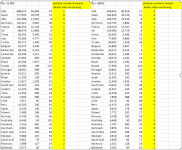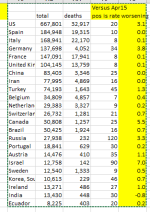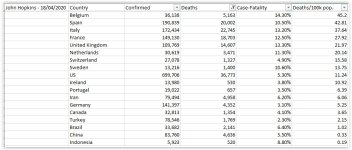vegster
Sanity Clause
- May 5, 2008
- 28,445
@HWT. Any thoughts on how obesity is affecting mortality rates among Covid 19 cases? Not very scientific (actually not scientific at all) but a large number of the younger individuals who have died with no apparent underlying health issues appear from photos to be on the large size?
Sent from my iPad using Tapatalk
I read somewhere that factors that increase the risk of being hospitalised with serious symptoms are...
Being Male, of an Asian ethnicity, 50 + years old, underlying health problems, Smoking and obesity.







